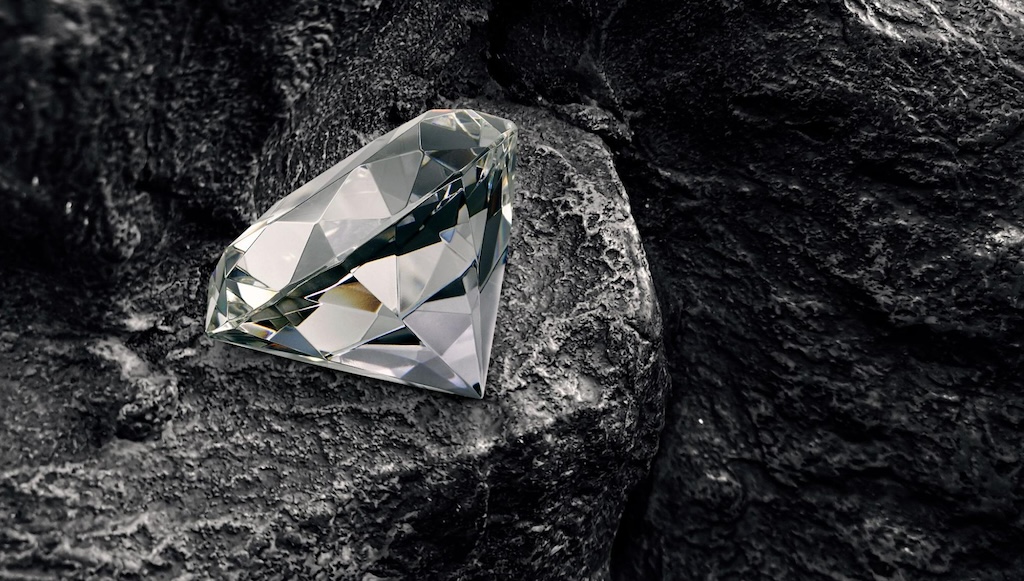Despite the fact that diamonds have traditionally been linked to wealth and love, curiosity in their past is growing. While often beautiful, the process used to extract conventional diamonds from the soil poses significant ethical and environmental risks.
The production of lab diamonds, that mimic the brilliance of mined diamonds through cutting-edge laboratory techniques, has become a prominent alternative. However, the growing popularity of lab-created diamonds brings forward debates over their true sustainability.
While some critics of natural diamonds draw attention to the moral and environmental challenges associated with conventional mining, others pay attention to the issues linked with lab-grown diamonds, particularly concerning the energy use and carbon emissions. This has sparked an expanding discourse on both choices’ sustainability.
In the following discussion, we’ll examine the ethical and environmental impacts of both natural and lab-grown diamonds to offer a clearer perspective on their sustainability.
Ethical Concerns of Natural and Lab-Created Diamonds
Are lab-grown diamonds a more ethical choice? The answer is not definite. Despite their brilliance and appeal, both natural and lab-grown diamonds raise important ethical questions.
- Conflict Free Production
As an alternative, lab-grown diamonds are created in safe, regulated lab settings. By using this technique, it is ensured that the diamonds are produced without the complications that might arise from mining in conflict-prone locations. Customers can now enjoy their diamonds’ brilliance knowing that they came from a fair and ethical source.
However, it’s important to recognize that many natural diamond mines have made significant strides in ethical practices. Numerous mines operate under stringent international standards, such as the Kimberley Process, which helps to ensure diamonds are conflict-free. These mines also contribute to the well-being of local communities by providing stable jobs, fair wages, and funding for education and healthcare.
- Improving Ethical Transparency
The clarity of the storyline of lab-grown diamonds is one of the main distinctions between them and mined diamonds.
Every time you buy a lab-grown diamond, you know exactly where it came from – a clean, safe lab. No suppositions, no mysteries. Businesses that market lab-grown diamonds are happy to explain the process used to create their stones, and they can provide certificates as proof.
Similarly, the natural diamond industry has become more transparent over the years, with many companies now offering traceability for their diamonds. Buyers can often trace the journey of their natural diamond from the mine to the market, ensuring it meets ethical and environmental standards.
Environmental Impact of Mined vs Lab-Grown Diamonds
Are lab diamonds better for the environment? People’s inclination toward lab-produced diamonds over common ones is generally due to the perception that they are more ecologically inviting.
Conventional diamond mining, which yields a few of the world’s most lovely jewels, can have natural impacts. It can create greenhouse gases, contaminate water, and influence forests. Additionally, the excavation required can disrupt large areas of land.
Despite these challenges, many mining companies are working to reduce their environmental footprint. They invest in land rehabilitation, cut carbon emissions, and explore renewable energy options. They also collaborate with environmental organizations to protect ecosystems and wildlife.
In contrast, lab-created diamonds are considered more eco-friendly. They don’t require extensive land clearing, which helps preserve soil, wildlife, and plants. However, their production presents its own challenges due to high electricity use, often sourced from fossil fuels like gas and coal. The creation process involves high pressure and temperature or specialized gases. As technology advances, lab-grown diamonds could become more sustainable if powered by renewable energy sources.
So, are lab-grown diamonds more sustainable?In evaluating the sustainability of diamonds, it is crucial to consider both the direct environmental impacts and the ongoing efforts to address them. Consumers should weigh these factors according to their values and priorities. As technology and practices evolve, both industries may continue to make strides toward greater sustainability.
Societal Impact
Lab-grown diamonds bring benefits and challenges, particularly regarding societal impact. Many communities rely on traditional diamond mining, and shifting away from it may affect the local economy in areas where mining is a major source of income. So, it’s important to consider the role of traditional mining alongside the rise of lab-grown diamonds.
Apart from that, the natural diamond industry significantly contributes to many developing regions, not just economically but also through social programs. Mining companies often invest in local infrastructure, schools, and healthcare facilities, which helps to improve the quality of life in these communities.
On the other hand, lab-grown diamonds generate new employment opportunities, supporting economic expansion and opening new opportunities. This means that both industries are essential for economic growth.
Consumer Perceptions
Public opinion on diamond sustainability is divided, with varying views on lab-grown versus natural diamonds. It’s important to clearly understand the advantages and drawbacks of each.
Lab-grown diamonds involve significant energy use, and the long-term environmental impact of their production is still being studied. At the same time, the natural diamond industry has made notable progress in addressing ethical and environmental concerns.
Looking ahead, there is hope for continued improvements in both types of diamonds as technology and practices evolve. Ultimately, the choice between natural and lab-grown diamonds depends on your values and priorities. Each type has its own unique benefits, and selecting the right one for you involves considering what aligns best with your objectives and ideals.

